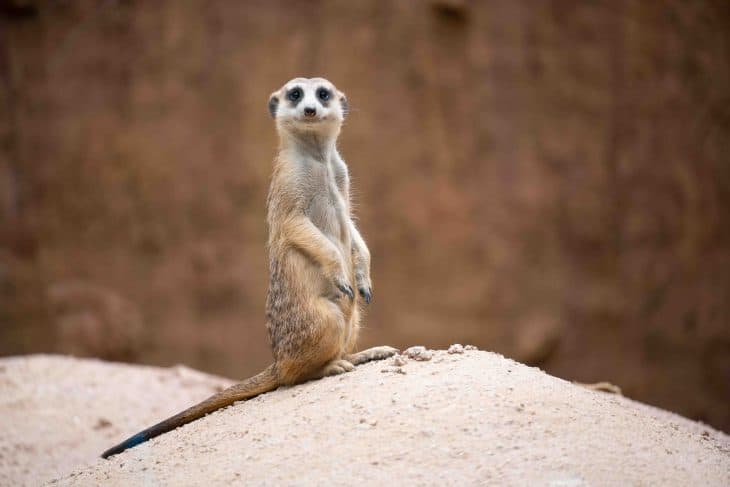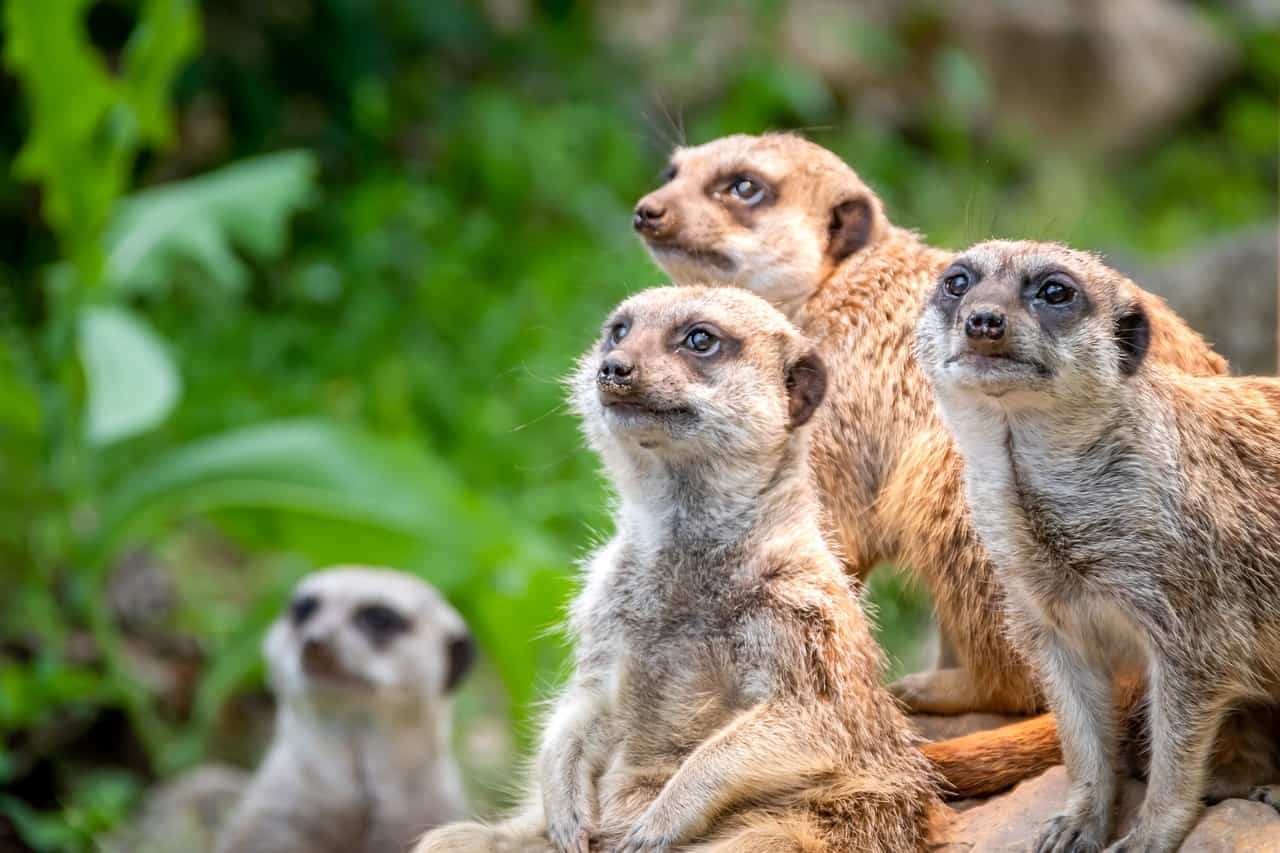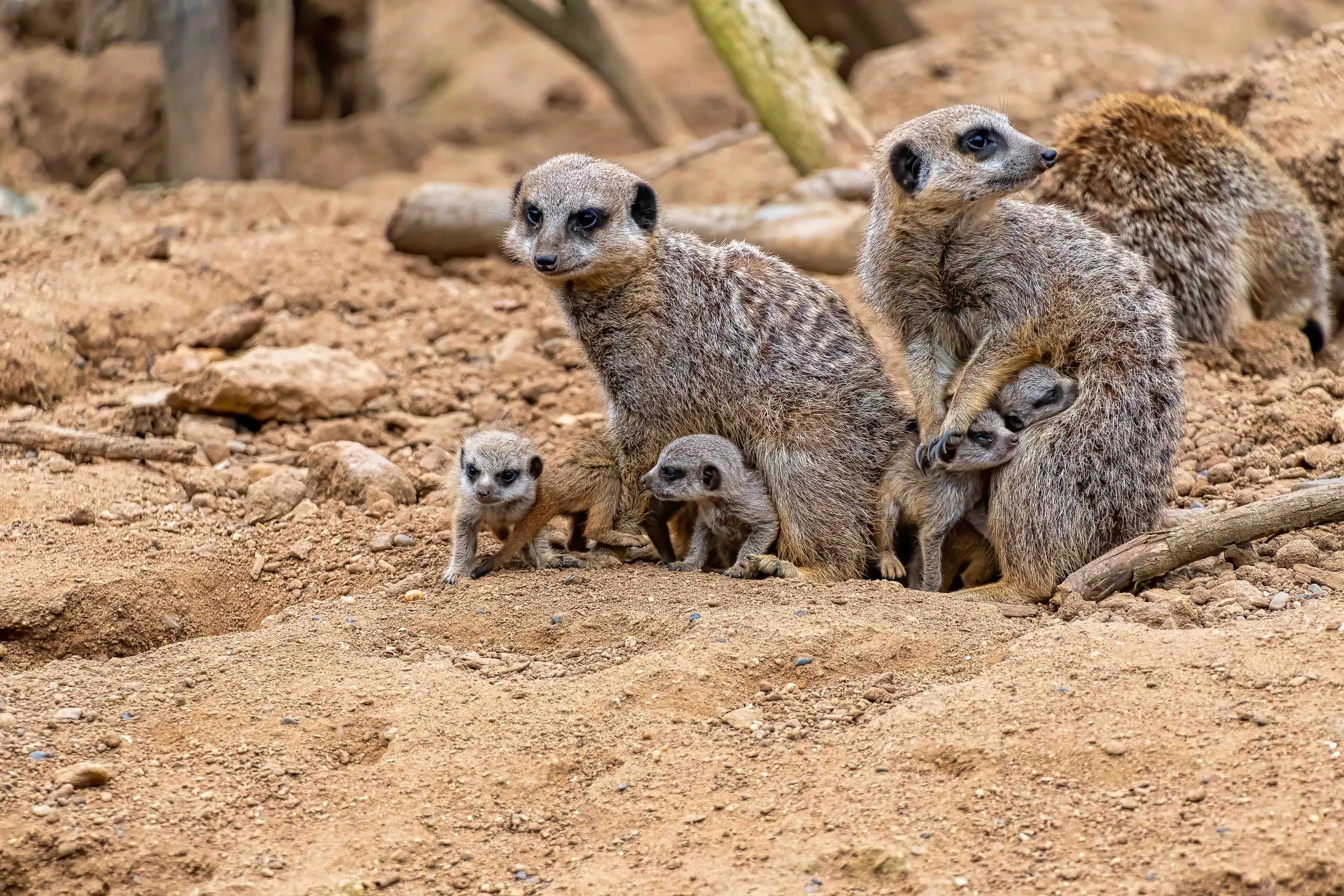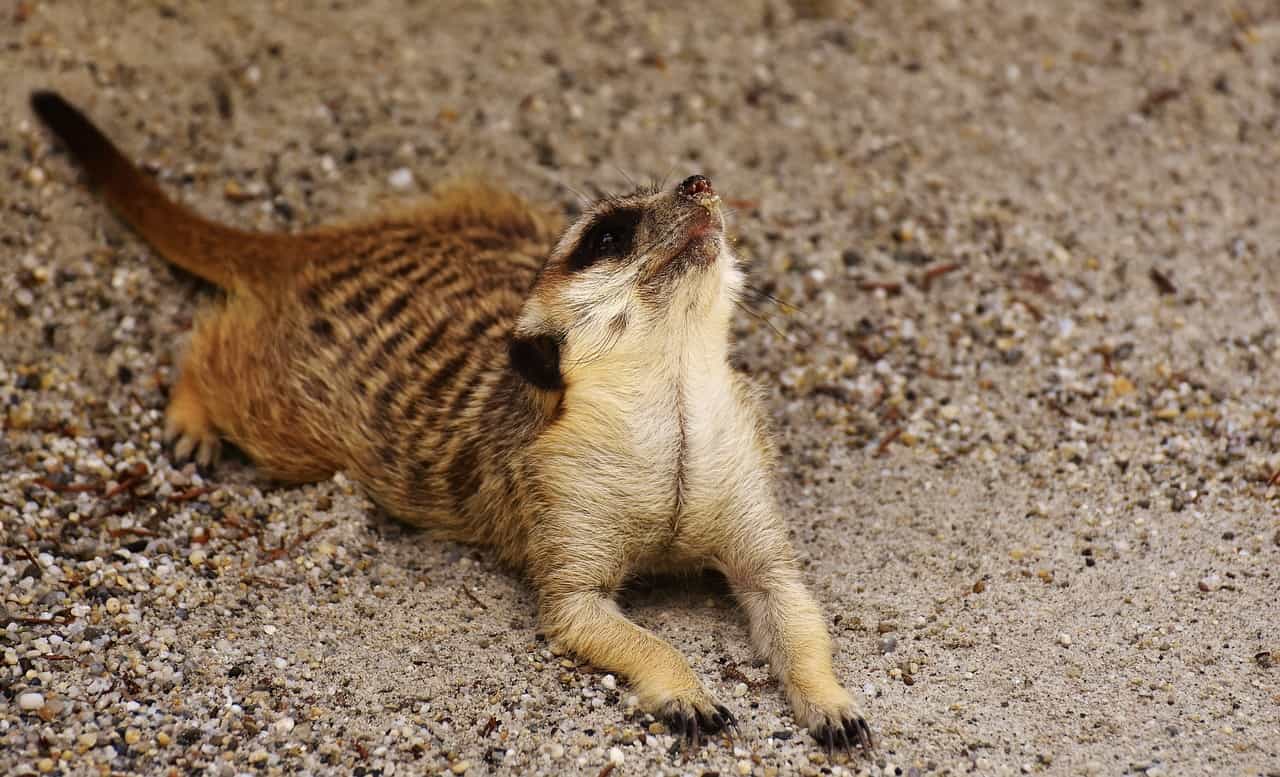
Meerkats are squirrel-sized mammals that live in Africa, where they become popular because of their upright posture. They often stand on their hinds legs as they look over their surroundings. With their bushy, brown-striped fur, small and pointed face, and large eyes surrounded by dark patches, they are truly adorable. If these Meerkat facts we just shared entice you to come looking for one, we don’t blame you!
If you want to see these cute, furry animals with your very own eyes, you better start looking for them in the morning because meerkats only go outside during the daytime. They commonly live in burrows and stay in large groups. Meerkats get out of their burrows as soon as the sun rises to search for food. Just like ants, meerkats work together. They hunt for their favorite foods using their keen sense of smell. You’ll usually see them eating insects, caterpillars, spiders, and scorpions. Small reptiles, birds, eggs, fruits, and plants are also on their menu.
Unfortunately, they live a difficult life in the African desert, they face constant danger from hungry predators, rival meerkats, droughts, and burrow-flooding rainstorms. Despite all the challenges they face, meerkats are also extremely sociable, especially the female ones. Sadly, you can’t bring one home, keeping a pet meerkat is illegal in America but legal in the United Kingdom.
Know more about these cute, unique creatures by checking out our 30 fun meerkat facts!
- Meerkats have 36 teeth.
- Their body is 50 centimeters or 19.68 inches long, including the tail.
- Meerkats weigh between 0.62 to 0.97 kilogram or 1.36 to 2.1 pounds.
- A meerkat has five toes in its forefeet and four in its hind feet.
- Meerkat can live up to eight years in the wild and 12 to 14 years in captivity.
- Meerkat is a small carnivorous mammal.
- Meerkats have grey to yellowish-brown striped coats.
- A meerkat has a pointed snout, large eyes, a broad head, and long legs.
- Meerkats are active during the day, mostly in the morning, and late afternoon.
- Meerkats have big, sharp, and curved front claws.
- Meerkats use their tails to balance themselves when they’re standing.
- A group of meerkats is a gang or mob.
- Jackals and raptors, birds of prey like hawks, falcons, and eagles are the common predators of meerkats.
- Meerkats are vigilant, they often check the surroundings.
- Their ears are large and can be folded back to prevent the entry of dirt when they dig.
- Meerkats have binocular vision, they can see a field or area at a wide angle.
- Meerkat is also called “suricate,” which means “rock cat.”
- They have dark patches on their eyes that reduce the sun’s glare and help them see far distances.
- Meerkats have the ability to control the body temperature that allows them to survive in the desert.
- They do not have excess body fat, thus looking and hunting for food is a constant activity.
Meerkats are native of Africa.
Meerkats commonly live in the grasslands and deserts of Africa including South Africa, southwestern Botswana, and Namibia. They live in burrows or tunnels that have several openings which they use to escape from predators. Meerkats usually leave their burrows during the day and go back when they sense danger.

Meerkats are omnivores.
Meerkats are insectivores. Insectivores are animals that feed mainly on beetles, butterflies, and moths. They also eat eggs, small birds, a few reptiles, arachnids, and amphibians. Moreover, meerkats eat certain fruits as well, like citrus melons, tubers, and other roots.
Meerkats can produce up to 12 sound combinations.
Meerkats communicate with one another by producing, and sometimes mixing different sounds. A study showed that they can produce up to twelve sound combinations.
They use these sounds for several reasons: to keep predators in check, to care for their young, and to gather other meerkats. For instance, meerkats use their alarm call once they sense a predator.
Meerkats pups are born blind and deaf.
Normally, female meerkats give birth three to four offspring at a time, but some can have up to eight baby meerkats. Their offspring, called pups, are born on their burrows where they are safe from predators. Pups weigh about 25 to 36 grams or 0.9 to 1.3 ounces. Aside from being born very small, they are also born blind, deaf, and nearly hairless.

Meerkats are sociable animals.
Meerkats live as a group, they form packs of two to 30 members. They live in a home range that has an area of about 5 square kilometers or 1.9 square miles. Their homes can sometimes as big as 15 square kilometers or 5.8 square miles, with several burrows inside of them. A pack of meerkats is made up of several families and dominated by female meerkats.
Meerkats work together.
Meerkats work in groups, they often take turns guarding their pack. Some serve as a lookout for predators. Everyone contributes to taking care of the young meerkats. When under attack by predators, the gang will gather together, and they will bite or claw or scratch the predator until it retreats or dies.
It is believed that meerkats are immune to venom.
Researchers have different views on whether meerkats are immune to venom or not. Some claim they are immune to the venom of snakes and stings of scorpions as they belong to the mongoose family. A mongoose is a small carnivorous mammal with a long body and tail. However, other studies say that meerkats have only developed techniques on how to remove the stings of scorpions before consuming them.
Meerkats teach their young.
Experts say that adult meerkats teach their pups how to properly attack and consume prey without being harmed. At first, adult meerkats will give their young dead prey.
Later on, adult meerkats will give their young, disabled prey, such as a scorpion with a stinger. As they become older, they learn to get their own prey, or they are sometimes given a live scorpion.
Meerkats can kill their own species.
Researchers revealed that out of more than 1,000 different mammals, meerkats are most likely to kill their own species, followed by the red-tailed monkey. Other sources also say that low-ranking meerkats sometimes kill the offspring of dominant members to ensure that their young will have a higher chance of survival.

Meerkat cannot be kept as pets.
Despite their name, meerkats are not the same as cats, and cannot be domesticated. Besides being illegal to own them, they tend to be very aggressive and have a foul smell. Plus, meerkats are carriers of rabies and tick-borne diseases, which can be harmful to humans.
Was this page helpful?
Our commitment to delivering trustworthy and engaging content is at the heart of what we do. Each fact on our site is contributed by real users like you, bringing a wealth of diverse insights and information. To ensure the highest standards of accuracy and reliability, our dedicated editors meticulously review each submission. This process guarantees that the facts we share are not only fascinating but also credible. Trust in our commitment to quality and authenticity as you explore and learn with us.
